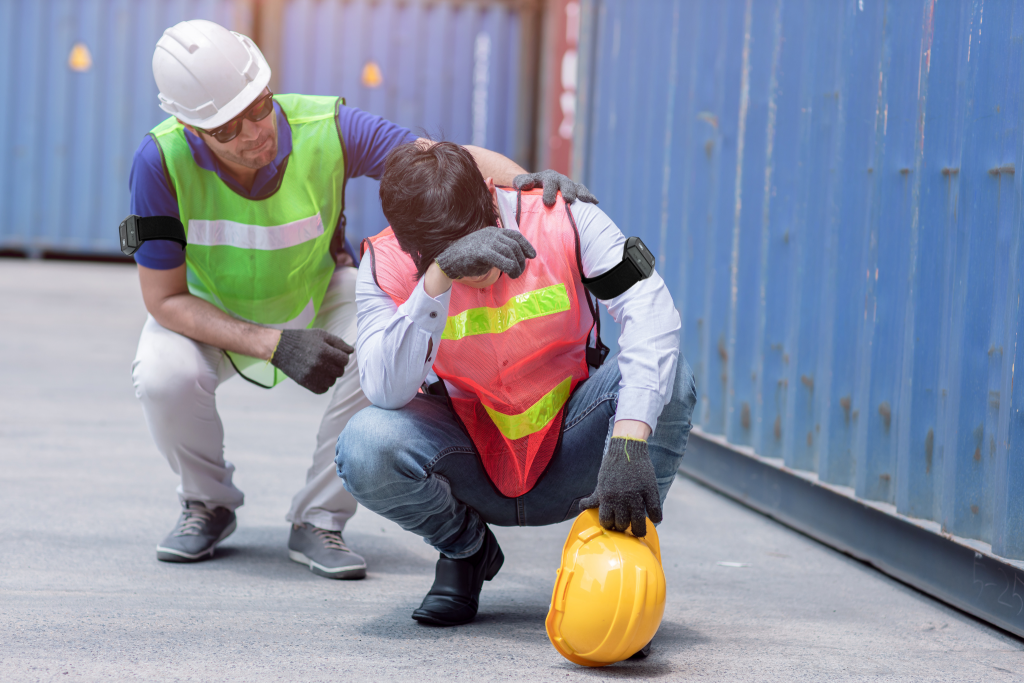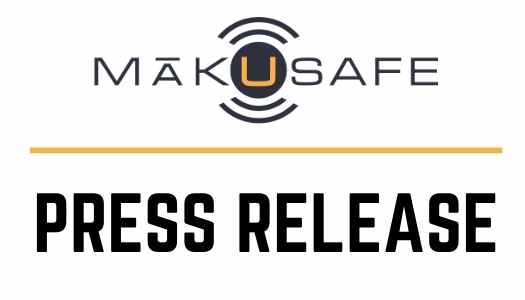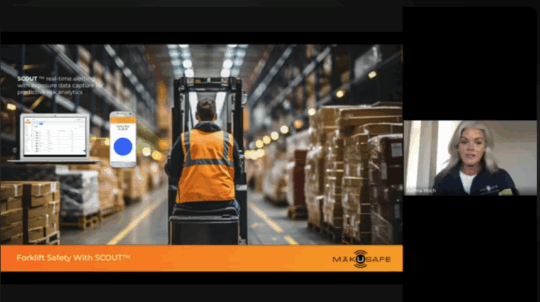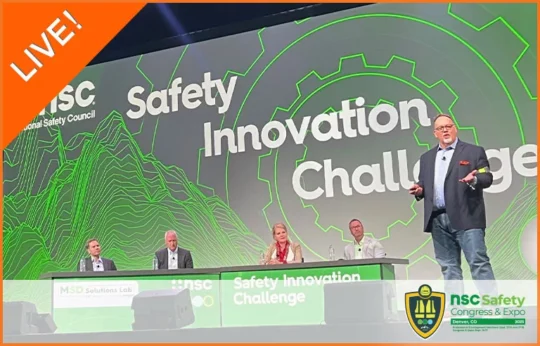Early Detection of Worker Impairment with Wearable Tech
June 17, 2022
The National Safety Council defines impairment as the inability to function normally or safely as a result of a number of factors – from chemical substances (e.g., alcohol, opioids, cannabis), physical factors (e.g., fatigue and certain medical conditions), social factors (e.g., professional and other stressors) and mental distress (e.g., related illness and other factors). At MākuSafe, our industrial safety wearable technology gives safety managers an inside look at early signs of a variety of leading indicators. This may apply to the early detection of worker impairment and keeps frontline workers connected with a direct communication line should they need to report the signs of an impaired coworker or alert their supervisor to their own personal situation. The key to using wearable tech to support detection of worker impairment is understanding what workers are experiencing and where, so action can be taken.
Here are four examples of how wearable technology may be used to detect when and if to intervene on worker impairment in your workplace:
- Environmental context
- Motion hazards
- Voice memos
- Fewer distractions/interruptions

Environmental Context
Some of the most impactful contributing factors to a workers fatigue are environmental conditions.
Working in an environment that is too hot can make workers lethargic and unfocused. Heat stress can cause the body to lose electrolytes and water faster, causing low mental performance and decreased motor skills. According to NIOSH, heat can also increase the risk of injuries in workers as it may result in sweaty palms, fogged-up safety glasses, and dizziness. In a study conducted by Anant Sudarshan, who is the University of Chicago’s South-Asia Director for their Energy Policy Institute, worker productivity in India was studied in relation to work conditions. Their findings demonstrated that for workers in the garment industry, productivity dropped up to 4 percent per each increased degree.
However, it’s not just high temperatures that can increase mental stress and worker fatigue. Other environmental factors can play a huge role in wearing down a worker and increasing the chance of an accident due to fatigue. For example, prolonged exposure to high sound dosage. According to OSHA, loud noise can create physical and psychological stress, reduce productivity, interfere with communication and concentration, and contribute to workplace accidents and injuries by making it difficult to hear warning signals. Excessive or prolonged noise causes physiological responses that decrease employee performance. Loud, excessive noise in short bursts or for a long period can put the body through unnecessary stress responses, causing increased heart rate, blood pressure and cortisol levels.
Additionally light levels can play a factor in worker impairment. Insufficient lighting can cause workers to strain their eyes, causing vision issues or headaches. Employees may also experience drowsiness which can result in lower work productivity. Conversely, extremely bright lighting can cause workers to experience headaches or interruptions in their vision from glares or flashes. When the retina’s light-sensing cells become over-stimulated from looking at a bright light continuously, they can release massive amounts of signaling chemicals, and can injure the back of the eye as a result.
MākuSafe’s wearable device sensors assess environmental conditions in real-time from around each individual worker and provides notifications to the safety manager to take action when needed. These sensors provide a more accurate reading of what they are experiencing in their area, whether indoors or outdoors. The data is collected from each worker and processed inside the data analytics platform, MākuSmart. The safety manager can then easily note environmental hazards, potentially damaging environmental trends and receive communication about harsh conditions directly from a worker voice memo. This leading indicator data allows the safety manager to intervene where necessary to provide extra hydration, breaks, relocation or whatever efforts are deemed necessary to assist the worker.
Motion Hazards
Many industrial workers are in positions where they are required to complete high force motion tasks or repetitive motions. Despite the best training on performing these motions safely, exertion over time can prove risky. While there are many potential hazards related to motion, it can be tough to spot a potential hazard BEFORE it happens without real-time leading indicator data. As workers become impaired, fatigued or stressed, they may perform a high-force motion when it’s not typically anticipated or they may slip into bad form with a repetitive motion increasing the chance of injury to themselves or others. Additionally, as workers become distracted from stress or fatigue, they may increasingly slip, trip or fall.
MākuSafe’s sensors can detect these motion hazards real-time and analyze trends in a facility or job site to help safety managers better protect workers. The Motion Explorer feature examines potentially hazardous motions and compares worker physicality to detect anomalies. In the trends section of MākuSmart, safety managers can see if patterns of slips and trips are occurring at certain point in each shift to better manage breaks or rest time.
Voice Memos
First, workers need to feel psychologically safe to communicate a feeling of impairment to their supervisor. Second, they need a safe, easy way to communicate directly without leaving their work area if possible. The voice of the frontline worker is extremely powerful and the push-to-talk feature on the wearable device encourages communication and increases engagement by creating a way for the worker to feel safe conveying concerns.
The voice memo feature on the MākuSafe wearable allows a worker to press and hold the button to leave a 15-second message. With this brief message they can communicate that they are feeling over-heated, fatigued, ill or report observations of conditions around them such as rising temperatures, hydration stations that need refilled or communicate on behalf of an impaired worker. The audio recording can even capture signals such as slurred words or otherwise impaired speech. These voice memos arrive immediately in the safety manager’s MākuSmart dashboard and contain both the audio recording and a written transcript of the message. These voice memos can also be received as push notifications on a mangers smart phone or tablet. Many workers use the feature to report a near-miss as well, allowing organizations to capture far more near-misses or good-catches than they ever thought possible.
Fewer Distractions
If you have a smart watch or fitness tracker, you’ve likely received some sort of haptic feedback like a buzz or ding as an alert is delivered or a goal is reached. Some safety wearables also use this same type of notification to alert users to a hazard. The drawback with this type of ding or buzz is the distraction it causes. In particular, industrial workers may find many more risks with haptic feedback than advantages. Each time a device buzzes a worker to note an incorrect posture, movement or potential hazard, their thought process is interrupted, causing them to lose focus and leading to potentially dangerous situations. Along the same lines, workers can become desensitized to haptic alerts over time, potentially ignoring an alert that would help them avoid a hazard.
With the MākuSafe device, the worker will receive no haptic or auditory alerts. They stay focused on their work and their surroundings. The sensors in the device will monitor the environmental and motion hazards around them and synthesize that data into useful hazard indicators for the safety manager. They can also use the voice memo mentioned above to take an intentional break and communicate a hazard, near-miss or possible impairment.
Want to learn more?
If your organization is committed to staying on top of worker impairment, let’s talk about how MākuSafe’s wearable technology fits into your proactive safety management system. Schedule a demo or contact us for more information.





